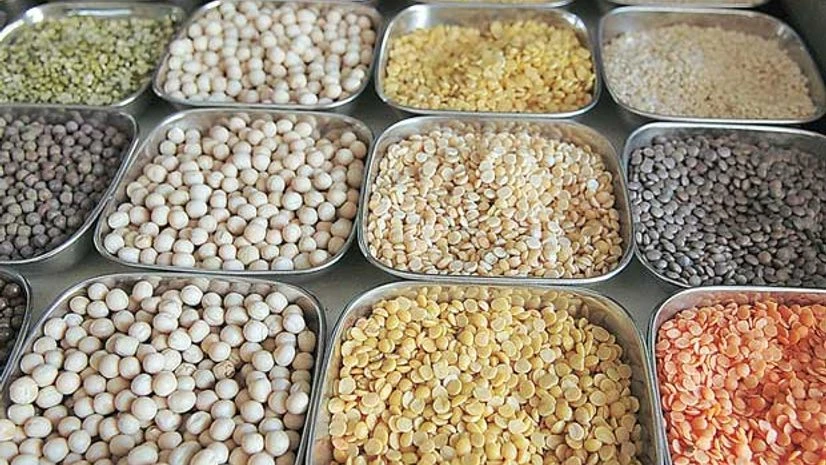Pulses production might touch a record 20 million tonnes (mt) in 2016-17, the highest since 1957, since sowing area is up 35 per cent from last year in the ongoing kharif season.
Encouraged by better returns, farmers have diverted area to pulses from rice, coarse grains and soyabean in many states. A rise of Rs 600 a quintal in the average Minimum Support Price (MSP) for pulses has played a major role in this.
Rating agency SMERA believes that domestic production of pulses will exceed 20 million tonnes. The highest production ever since 1957. This is based on the current area sown per crop (year to date) and future outlook of available land and substitute crops.
Also Read
As per data from the agriculture department of India, area under pulses has reached 13.60 million hectares as on August 19, 2016 as against 10.05 million hectares in corresponding period of 2015.
"Production of pulse is all set to exceed the government estimate of 20 million tonnes, cooling prices substantially. A healthy monsoon complemented by significant increase in minimum support price (MSP) has supported this gain. Inflation pressures will however subside once domestic supply reaches the market," said Sankar Chakraborti, chief executive officer of SMERA Ratings Limited.
Taking cues from the current situation, SMERA believes that farmers have strategically planned their cultivations to maximize gains. Rise in pulse MSPs and extraction of higher yields per hectare from sugarcane plantations through the use of technology and fertilisers has extensively helped these agricultural gains.
"As the country witnessed weak monsoon in last two years, acreage of pulses had gone down. But now because of attractive prices, farmers have harvested pulses more in this year. Sowing may touch to 12 or 13 Mt in this kharif season," said G Chandrashekhar, economic advisor of Indian Merchant Chamber (IMC) and member of Commodity and Derivative Advisory Committee of Securities and Exchange Board of India (Sebi).
According to Chandrashekhar, area of soyabean dipped in Madhya Pradesh, Rajasthan and Maharashtra and shifting in favour of pulses. Similarly, farmers diverted from rice and coarse grains to pulses as well this year.
About 67 per cent of domestic pulse production takes place during the rabi season and an additional 13 Mt are expected to enter the market by the end of Q4 2016-17 and beginning of next financial year.
With domestic demand for pulses of about 24 Mt for the current year, a shortfall of 3.2 Mt is expected. India's agreement with African countries such as Mozambique for import of pulses will further add five million tonnes of buffer stock to this aggregate.

)
